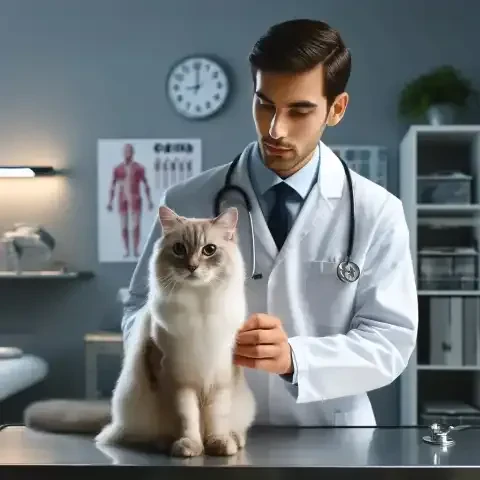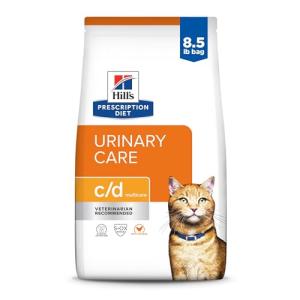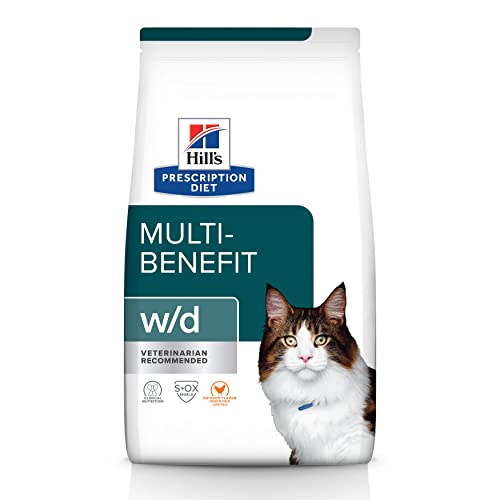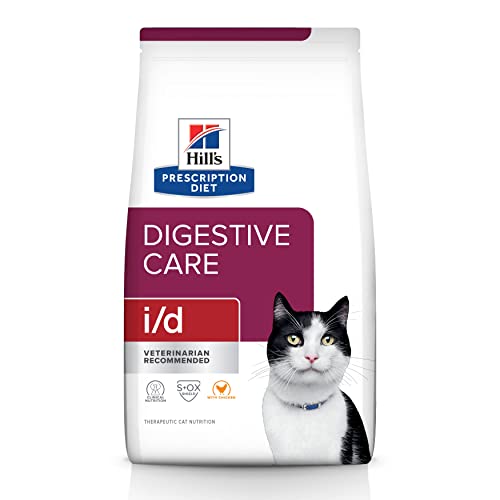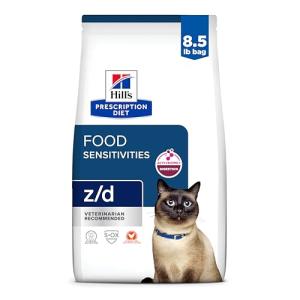That distinctive retching sound, often followed by a guttural cough, and then, the not-so-pleasant deposit on your rug – the infamous hairball. For many cat owners, hairballs are an almost expected, if unwelcome, aspect of feline companionship. We might grimace, clean it up, and perhaps sigh, thinking it's just "part of the cat package." But while hairballs are common, and occasional occurrences might be considered within the realm of "normal," it's important to understand why they happen, when they become a cause for concern, and most importantly, what we can do to manage and minimize them for the comfort and well-being of our feline friends. This article will serve as your comprehensive guide to navigating the world of feline hairballs. We’ll unravel the mystery of hairball formation, learn to distinguish between typical and problematic occurrences, and equip you with effective strategies, from grooming and dietary adjustments to lifestyle changes and knowing when veterinary intervention is necessary. By gaining a deeper understanding of hairballs and implementing proactive management techniques, you can significantly improve your cat's comfort, reduce those unwelcome surprises on your carpets, and ensure a happier, healthier life for your beloved feline companion.
Let's start by demystifying the hairball itself. While commonly referred to as "hairballs," these expelled masses are technically not perfectly round balls at all. More accurately, they are cylindrical or sausage-shaped clumps of hair bound together with saliva and digestive fluids. This elongated shape is a result of the passage through the esophagus as the cat attempts to expel the mass. Hairballs form within a cat’s digestive tract, specifically in the stomach. The process begins with grooming. Cats are meticulous groomers, spending a significant portion of their day meticulously cleaning their fur. Their tongues are covered in tiny, backward-facing barbs, papillae, designed to effectively groom their coats, acting almost like a natural comb. While this grooming is essential for hygiene and coat maintenance, it comes with a consequence – the ingestion of loose hair. As cats groom, their barbed tongues trap loose fur, and inevitably, a portion of this hair is swallowed. Now, here's the key point: a cat's digestive system is not optimally designed to process large quantities of ingested hair. Unlike food, hair is not readily digestible. While small amounts of swallowed hair usually pass through the digestive tract and are eliminated in feces without issue, larger quantities can accumulate in the stomach. When enough hair collects and the stomach cannot effectively move it into the intestines, the body's natural response is to expel it – hence, the hairball.
It's crucial to distinguish between what constitutes "normal" hairball occurrences and when hairballs become a sign of a potential problem. Occasional hairballs are indeed a common experience for cat owners, particularly those with long-haired breeds or cats who are diligent groomers. Generally, if your cat produces a hairball once a month or less frequently, especially if they are a long-haired breed, it might be considered within the realm of normal, albeit still something you might want to minimize. However, hairballs become problematic when they occur frequently. If your cat is experiencing hairballs more than once a month, this is a sign that hairball management strategies are needed. Beyond frequency, the signs of distress your cat exhibits during hairball expulsion are also important indicators. Occasional retching or coughing followed by the easy production of a hairball is one thing. Prolonged retching, gagging, or unproductive attempts to vomit, where your cat strains and heaves but doesn't produce a hairball, are concerning. These signs can indicate a more serious issue, potentially even a partial or complete blockage. Furthermore, be alert for other symptoms that might accompany frequent hairballs or difficult expulsion. Lethargy, a noticeable decrease in energy levels, loss of appetite or decreased interest in food, constipation (straining in the litter box without producing feces), or diarrhea, can all be associated with problematic hairballs or underlying digestive issues. It's vital to be aware that in rare, but serious cases, hairballs can lead to intestinal blockages. These blockages can be life-threatening and often require veterinary intervention, sometimes even surgery to remove the impacted hairball. Therefore, while occasional hairballs are a common feline experience, frequent or difficult hairball expulsion, especially accompanied by other concerning symptoms, should never be dismissed as “just a cat thing” and warrant further investigation and proactive management.
What factors contribute to hairball formation in cats? Understanding these causes can help you target your prevention strategies effectively. Excessive grooming is a primary culprit. While all cats groom, some cats groom excessively, leading to the ingestion of larger amounts of hair. It's important to differentiate between normal self-grooming, which is healthy and necessary, and overgrooming, which can be a sign of underlying issues. Overgrooming, often characterized by excessive licking, chewing at fur, or the appearance of bald patches due to self-inflicted hair removal, can be triggered by stress and anxiety. Cats are sensitive creatures, and stressors in their environment, such as changes in routine, loud noises, household disruptions, or conflict with other pets, can manifest as increased grooming as a coping mechanism. Boredom can also play a role. For indoor cats, particularly those lacking sufficient environmental enrichment and playtime, boredom can lead to increased grooming as a displacement activity, simply as something to do to fill their time.
Coat type and length are significant predisposing factors. Long-haired breeds, like Persians, Maine Coons, Ragdolls, and Himalayans, naturally possess a greater volume of hair. This sheer volume of fur means they have more loose hair available to ingest during grooming, making them inherently more prone to hairballs. Thick-coated breeds, even some medium-haired breeds with dense undercoats like Norwegian Forest Cats and Siberians, also tend to shed more and are therefore at higher risk. Shedding intensity is another key factor. Cats who are heavy shedders, regardless of breed, will naturally ingest more loose hair simply because there's more of it available to be groomed and swallowed. Seasonal shedding, particularly during spring and fall shedding seasons, can significantly increase hairball frequency in many cats.
Diet and nutrition play a crucial role in hairball formation. Low-fiber diets can contribute to hairball issues. Fiber is essential for healthy digestion and helps to move hair through the digestive tract. Diets lacking sufficient fiber can hinder the passage of hair, increasing the likelihood of hairball formation in the stomach. A diet primarily consisting of dry food can also be a contributing factor. Cats on predominantly dry food diets may be more prone to hairballs due to the lower moisture content of dry food. Moisture aids in the passage of hair through the digestive system, and a lack of moisture can make hairballs drier, harder, and more difficult to eliminate. A generally poor quality diet, lacking in essential nutrients, can negatively impact coat health. A dry, brittle coat is more prone to shedding, and a cat with a poor coat condition will naturally ingest more loose, unhealthy hair during grooming, increasing the risk of hairballs.
Dehydration further exacerbates hairball problems. Reduced moisture in the digestive tract, caused by insufficient water intake, can make hairballs drier and more compacted, making them harder to pass through the digestive system. Emphasize the critical importance of water intake for cats. Adequate hydration is essential for overall health and plays a direct role in aiding digestion and facilitating the transit of hairballs through the digestive tract.
Finally, underlying digestive issues and other health conditions can contribute to or worsen hairball problems. Gastrointestinal motility problems, conditions that slow down the movement of food and waste through the digestive tract, can increase the time hair has to accumulate in the stomach, thus promoting hairball formation. Inflammatory Bowel Disease (IBD), a chronic inflammatory condition of the digestive tract, can also affect digestion and the normal passage of hairballs. Allergies, both food allergies and environmental allergies, can manifest as skin issues, such as itching, dry skin, and increased shedding. Cats with allergies may overgroom in response to skin irritation, leading to increased hair ingestion and hairball frequency. Certain underlying systemic illnesses, while not directly causing hairballs, can impact digestion, overall health, and coat condition, indirectly contributing to hairball problems.
Fortunately, managing and preventing hairballs is achievable through a multi-pronged approach. Regular and effective grooming is your most powerful proactive strategy. Emphasize daily brushing, especially for long-haired cats and during peak shedding seasons like spring and fall. Even short-haired cats benefit from regular brushing. If daily brushing isn’t feasible, aim for brushing several times a week. The key is consistency. Use appropriate brushes for your cat's coat type. Slicker brushes are versatile and good for most coat types, helping to remove loose fur and detangle. Undercoat rakes are invaluable for double-coated breeds, effectively removing loose undercoat fur. Grooming mitts can be a gentler option for sensitive cats or for short-haired breeds, providing a massage-like grooming experience. The primary goal of brushing is to remove loose hair before your cat has a chance to ingest it during self-grooming. For long-haired breeds, or for owners who struggle to keep up with home grooming, consider professional grooming services. Professional groomers can provide thorough deshedding treatments, significantly reducing loose fur and hairball frequency, especially during shedding season.
Dietary management, specifically hairball control diets, can be a valuable tool. Hairball control diets are typically formulated to be higher in fiber. Ingredients like beet pulp, psyllium, and cellulose are commonly added to increase fiber content, which helps to push hair through the digestive tract more efficiently. Some hairball control formulas are designed to be highly digestible, minimizing digestive upset and promoting optimal nutrient absorption. Additionally, some hairball diets include lubricants. Ingredients like mineral oil or other lubricants can help coat ingested hair, making it smoother and easier to pass through the digestive system. Incorporating wet food into your cat's diet, regardless of whether you choose a specific hairball control formula or not, is highly beneficial. The increased moisture content of wet food aids in hydration and helps lubricate the digestive tract, facilitating hairball transit.
Lubricants and hairball remedies can offer additional support. Hairball pastes or gels are widely available and work by lubricating ingested hair. These typically contain petroleum-based or plant-based lubricants that coat the hair, making it slicker and easier to pass through the digestive system and be eliminated in feces. Veterinary-approved laxatives may be recommended by your veterinarian in some cases, particularly if a cat is prone to constipation or has a history of hairball impactions. However, laxatives should only be used under veterinary guidance and not as a long-term, unsupervised solution. It’s crucial to use these remedies with caution. Hairball pastes and gels, while helpful for symptom management, are not a long-term solution to underlying causes. They should be used as directed and not as a substitute for addressing the root causes of hairball formation through grooming, diet, and hydration.
Increasing fiber intake naturally can also be beneficial. Plain canned pumpkin (not pumpkin pie filling, but 100% pure pumpkin puree) is a safe and effective natural fiber source for cats. Adding a small amount (a teaspoon or two) to their food can help increase fiber intake and aid hairball passage. Psyllium husk is another excellent source of fiber, but it's important to consult with your veterinarian for appropriate dosage and guidance before adding psyllium husk to your cat's diet. Cat grass, a type of sprouted grass, can also act as a natural fiber source for some cats. Many cats enjoy chewing on cat grass, and it can help stimulate vomiting to expel hairballs (though this is not the primary goal, and some cats may vomit more frequently with cat grass).
Ensuring adequate hydration is a cornerstone of hairball management. Constant access to fresh, clean water is non-negotiable. Place multiple water bowls around the house, in various locations and materials, to encourage drinking. Water fountains, with their moving water, are often more enticing to cats than still water in a bowl and can significantly increase water intake. As mentioned, incorporating wet food into their diet greatly contributes to their daily hydration needs.
Lifestyle and environmental adjustments focused on stress reduction can also play a role. Identifying and reducing stressors in your cat’s environment is essential. Review common cat stressors and take steps to minimize them. Creating a calm and predictable environment, with consistent routines for feeding, playtime, and rest, can reduce anxiety-related overgrooming. Providing ample safe spaces, vertical territory, and engaging playtime can also minimize stress and boredom. Addressing boredom through interactive play, puzzle toys, and environmental enrichment can reduce boredom-related overgrooming and contribute to overall well-being.
Despite your best efforts at prevention, it’s vital to know when hairball issues warrant a veterinary visit. Be alert to red flags that necessitate immediate veterinary attention. Frequent hairballs, occurring more than once a month, should be investigated. Unproductive retching or vomiting, where your cat strains and heaves but doesn't expel a hairball, is a concerning sign. Loss of appetite or decreased water intake, lethargy or weakness, constipation or diarrhea, and abdominal pain or distension are all serious symptoms that require prompt veterinary evaluation. Coughing or wheezing, while sometimes mistaken for hairball expulsion attempts, could actually indicate respiratory issues and should also be checked by a vet. A veterinary diagnostic process for hairball issues may involve a thorough physical examination, including abdominal palpation, bloodwork and fecal exams to rule out underlying medical conditions, and potentially radiographs (X-rays) or ultrasound to visualize the digestive tract and rule out blockages. In severe or unusual cases, endoscopy, using a small camera to directly visualize the esophagus and stomach, might be necessary. Emphasize the critical importance of professional diagnosis and treatment for persistent or concerning hairball issues. Veterinary intervention is necessary to rule out underlying medical problems and determine the most appropriate treatment plan. Self-treating hairball issues without veterinary guidance could delay necessary medical care and potentially worsen an underlying condition.
Prevention is truly the key to effective hairball management. Start early by establishing good grooming and dietary habits from kittenhood. Consistency is crucial. Regular grooming, dietary management, and ensuring adequate hydration are ongoing commitments, not just occasional fixes. Remember that a hairball management approach may need to be individualized to each cat's specific needs, breed, coat type, and preferences. Continuously monitor your cat's hairball frequency and adjust your management strategies as needed. Pay attention to what works best for your cat and adapt your routine accordingly.
Managing hairballs in cats, while sometimes perceived as a mere nuisance, is an integral part of responsible cat ownership. By understanding the causes, implementing proactive strategies, and knowing when to seek veterinary guidance, you can effectively manage hairballs, significantly improve your cat's comfort and well-being, and ultimately strengthen the wonderful bond you share with your feline companion. Remember, while completely eliminating hairballs might be an unrealistic goal, achieving significant control and minimizing their frequency and severity is entirely possible. Embrace these proactive strategies, be consistent in your care, and you can look forward to a hairball-managed, healthier, and happier life with your feline friend, and fewer unwelcome surprises on your carpets along the way.
